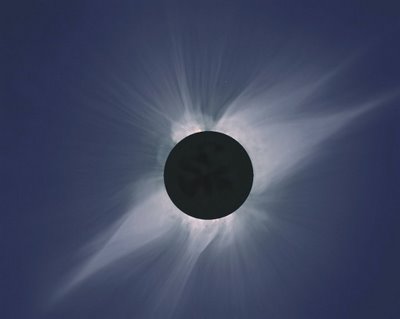
July 11, 1991
The glaciers and snow cap of Kilimanjaro are young compared to the ice cores of other ice fields on Earth. They didn't form because of solar events and they didn't shrink from solar events either. The most significant aspect of this report is the anthrolopogy that goes along with it. The tropics will experience shifts in civilization with expected droughts due to Human Induced Global Warming.
AFRICAN ICE CORE ANALYSIS REVEALS CATASTROPHIC DROUGHTS, SHRINKING ICE FIELDS AND CIVILIZATION SHIFTS
A detailed analysis of six cores retrieved from the rapidly shrinking ice fields atop Tanzania’s Mount Kilimanjaro shows that those tropical glaciers began to form about 11,700 years ago.
The cores also yielded remarkable evidence of three catastrophic droughts that plagued the tropics 8,300, 5,200 and 4,000 years ago.
Lastly, the analysis also supports Ohio State University researchers’ prediction that these unique bodies of ice will disappear in the next two decades, the victims of global warming. These findings were published today in the journal Science....
...Thompson and his colleagues retrieved six cores from the mountain two years ago after his team spent more than a month camped at a drill site above 19,300 feet. After a logistical nightmare requiring the hiring of 92 porters and obtaining 25 official permits, the team returned 215 meters (705 feet) of frozen ice core to the freezers at the university’s Byrd Polar Research Center....
... Clues from the cores suggest a much different, far wetter landscape near Kilimanjaro 9,500 years ago than exists there today. Thompson said that at that time, Lake Chad, now the fourth-largest body of water on the African continent with an area of about 17,000 square kilometers today, covered some 350,000 square kilometers - an area larger than the Caspian Sea.
The analysis of the core showed a 500-year period beginning around 8,300 years ago when methane levels preserved in polar ice cores dropped dramatically. “We believe that this represents a time when the lakes of Africa were drying up,” Thompson said, adding that the methane levels would register the extent of the wetlands thriving in the tropics....
...“Whatever happened to cause these dramatic climate changes in the past, could certainly occur again,” he said. “But today, 70 percent of the world’s population lives in the tropics. They would be dramatically affected by events of this magnitude. We have to find out what causes them to happen.”” ...
THE REASON ice fields such as those found on this great mountain in Africa are shrinking is because the 'coldness' of the troposphere is being lost to higher and higher altitudes. There is less and less 'snow' in the way of percipitation to 'recharge' them. The 'mass balance' diminishes and the shrinking takes place.
We all know that as one goes higher in altitude a couple of things happen: l. the air pressure is less and 2. the climatic temperature goes down.
Why is that?
The altitude is closer to the sun?
Maybe because it is futher from the infrared source? No. The infrared source, which generates the heat of Earth is emitted from earth itself and it is all around you. So, what gives?
Hm?
Maybe we are closer to the thick carbon dioxide and things don't work the same?
No. The answer is found in the "Ideal Gas Law" - Let's keep it simple. As the air space above Earth leads to the stratosphere the 'area' of the space is greater and the number of molecules of gas filling that space is less.
PV = nRT
P - pressure
V - volume
n - number of moles of a gas
R - is a 'constant' - 8.3145 J/mol K - the universal gas constant. Science has a lot of constants. Like the number of milliliters in a liter, or the number of inches in a foot. They don't change because they are proven to be 'constant.' The speed of light. The speed of sound. They are all constants.
T - temperature
There are five elements of the Ideal Gas Law. Two are one side of the equation and three are on the other side of the equation. When things change on one side of the equation then the other side is affected as well.
When going up in elevation on a mountain, the air gets thinner. The Pressure decreases, the Volume of the air increases and on the other side of the equation the moles of a gas decrease and the Tempature decreases while the equation stays in equilibrium.
This is a link to 'play' with The Ideal Gas Law (click here)
If you put your pointer on the temperature gauge and elevate it the results of higher temperature will be noted on the pressure gauge. The higher the temperature the higher the pressure. If one makes several adjustments to the temperature as suggested in the experiment a graph is generated so you can see the results of the experiment.
Now, remember, just because I am interested in illustrating the circumstances that produces air pressue at different elevations and why ice is at the top of mountains, this experiment is with all other features constant. It is with a constant volume. If the volume were to drop the pressure gauge would drop because other elements such as temperature would change as would the moles of the gas. If the temperature were to go up and due to that the volume were to be more diffuse/greater the pressure would not go up.
It is an interesting site, where one can play with the concepts of The Ideal Gas Law and begin to understand the troposphere of Earth and how complicated it can be. It has absolutely nothing to do with solar activity.
